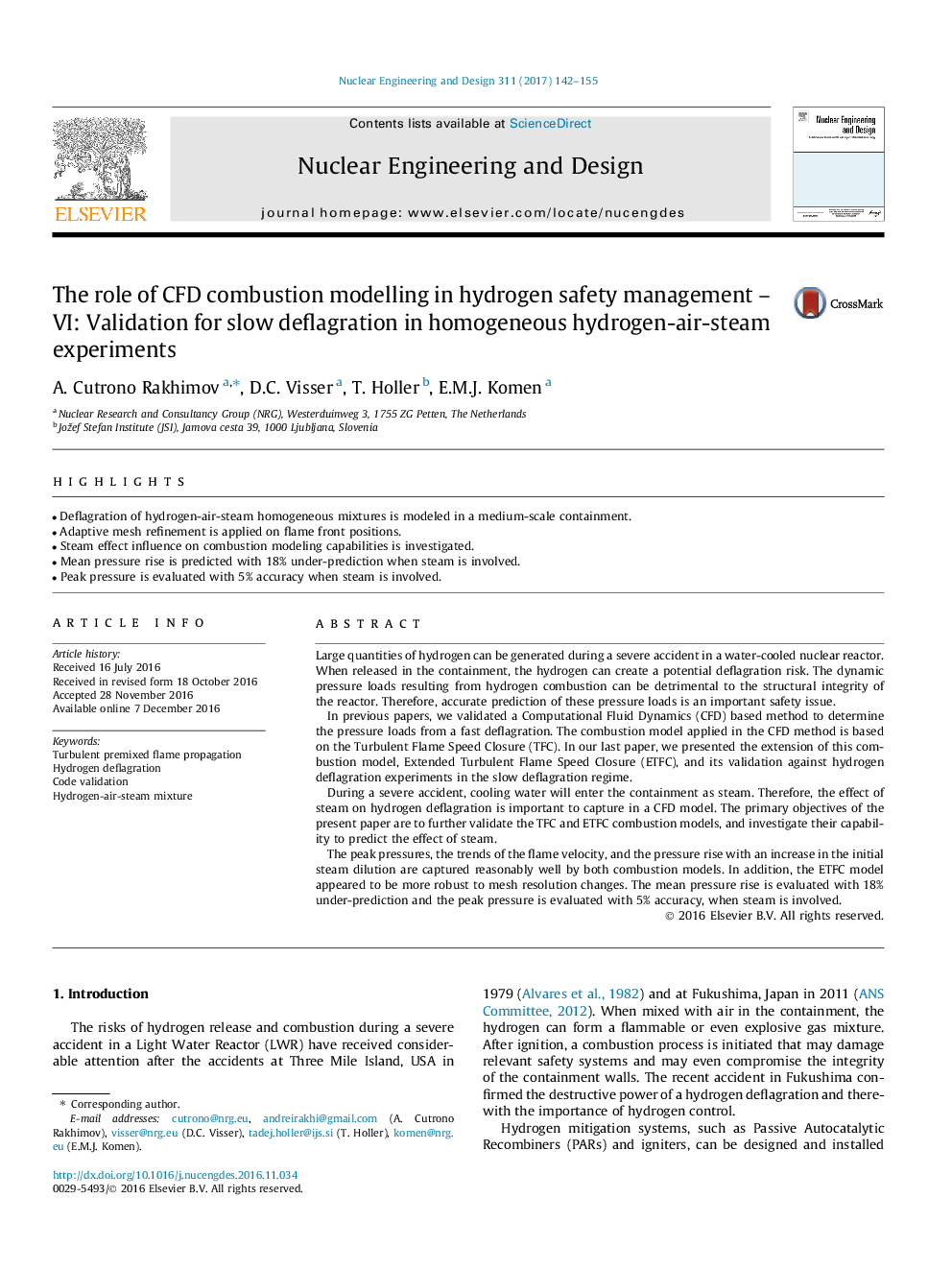| کد مقاله | کد نشریه | سال انتشار | مقاله انگلیسی | نسخه تمام متن |
|---|---|---|---|---|
| 4925735 | 1431410 | 2017 | 14 صفحه PDF | دانلود رایگان |

- Deflagration of hydrogen-air-steam homogeneous mixtures is modeled in a medium-scale containment.
- Adaptive mesh refinement is applied on flame front positions.
- Steam effect influence on combustion modeling capabilities is investigated.
- Mean pressure rise is predicted with 18% under-prediction when steam is involved.
- Peak pressure is evaluated with 5% accuracy when steam is involved.
Large quantities of hydrogen can be generated during a severe accident in a water-cooled nuclear reactor. When released in the containment, the hydrogen can create a potential deflagration risk. The dynamic pressure loads resulting from hydrogen combustion can be detrimental to the structural integrity of the reactor. Therefore, accurate prediction of these pressure loads is an important safety issue.In previous papers, we validated a Computational Fluid Dynamics (CFD) based method to determine the pressure loads from a fast deflagration. The combustion model applied in the CFD method is based on the Turbulent Flame Speed Closure (TFC). In our last paper, we presented the extension of this combustion model, Extended Turbulent Flame Speed Closure (ETFC), and its validation against hydrogen deflagration experiments in the slow deflagration regime.During a severe accident, cooling water will enter the containment as steam. Therefore, the effect of steam on hydrogen deflagration is important to capture in a CFD model. The primary objectives of the present paper are to further validate the TFC and ETFC combustion models, and investigate their capability to predict the effect of steam.The peak pressures, the trends of the flame velocity, and the pressure rise with an increase in the initial steam dilution are captured reasonably well by both combustion models. In addition, the ETFC model appeared to be more robust to mesh resolution changes. The mean pressure rise is evaluated with 18% under-prediction and the peak pressure is evaluated with 5% accuracy, when steam is involved.
Journal: Nuclear Engineering and Design - Volume 311, January 2017, Pages 142-155